The Valles Caldera National Preserve is located 92 miles north of downtown Albuquerque in the Jemez Mountains, north of Jemez Springs. I recently had the opportunity to explore the backcountry with my camera. That part of the preserve has restricted access to preserve its pristine environment. Access is by a special scheduled permit and only a few cars are allowed into the area each day. The Caldera is a unique feature in the Jemez Mountains; a place already unique as a “sky island” of green surrounded by desert.
The Caldera is the site of a huge collapsed volcano. The volcano erupted and subsequently collapsed into the emptying magma chamber. It apparently did this three times over the many millions of years. The last major eruption was 1.25 million years ago, but volcanic activity continues. Lava domes developed followed the eruption and collapse and continued as recently as 40,000 years ago. Geothermal features persist today. You can smell the sulfur at times.
I have been to the caldera many times but never ventured into the far backcountry. I went snowshoeing up there this past winter. We were watching elk and coyotes last fall in Valle Grande.

Google Maps
Valle Grande is the large valley adjacent to Highway 4. In the backcountry there are several prominent lava domes and three valleys — from west to east: Valle San Antonio, Valle Santa Rosa, and Valle Toledo. San Antonio Creek and tributaries run through these valleys and exit the caldera, joining up with the Jemez River at Battleship Rock, north of Jemez Springs.
It was a bit foggy and with low clouds on the morning of our visit. Valle Grande is impressive any time but particularly so in these conditions. The temperature was in the 40s early in June.
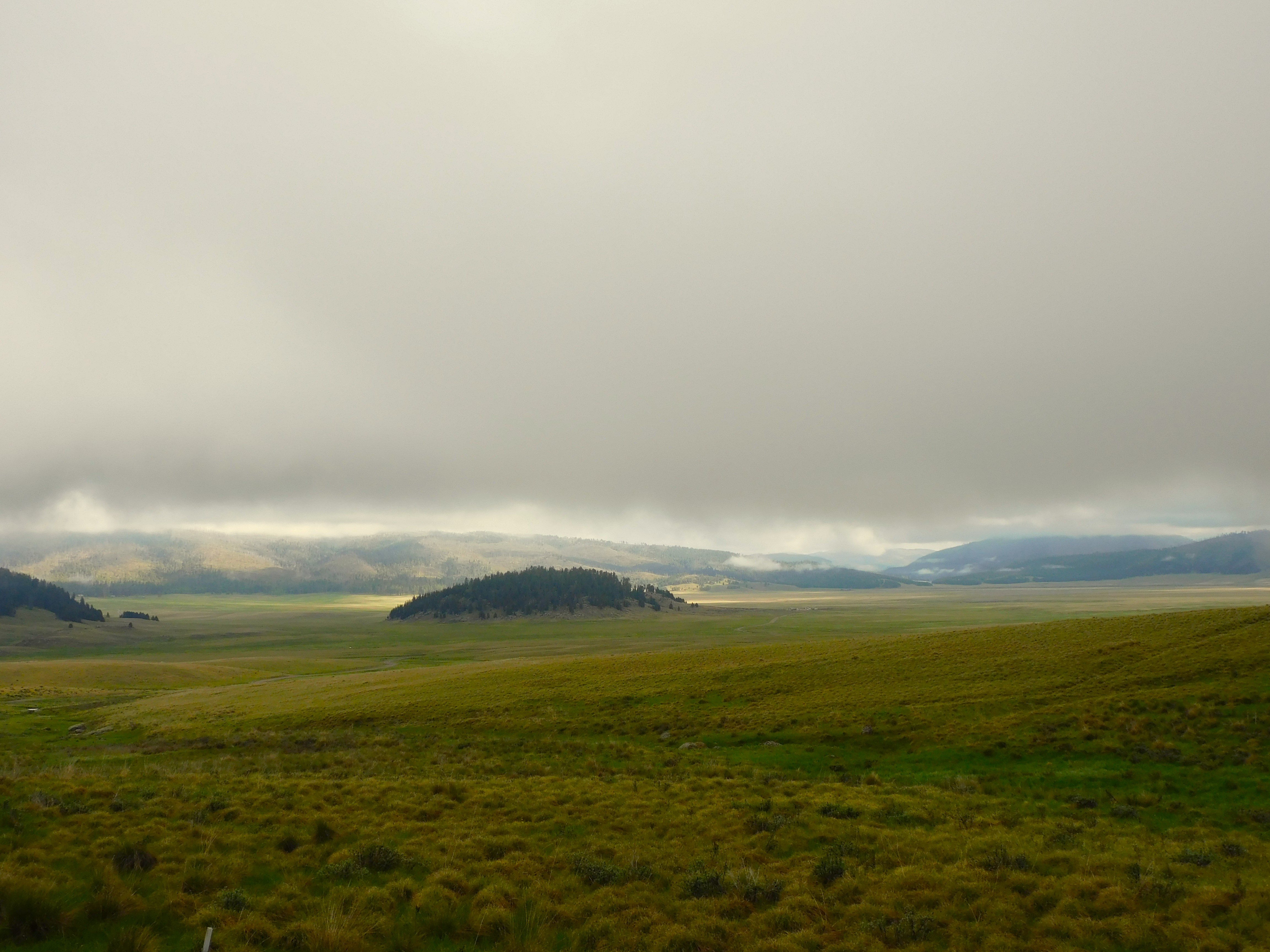
The permit into the backcountry includes a code to open the locked gate. It only works on one of the three locks. Your quest is to guess which one is the right one — or so it seemed. We finally figured it out. The sky was clearing, and the sunlight and cloud shadows drifted across the caldera.
The multiple lava domes are apparent at various places in the three valleys. There are also ancient lake deposits since the caldera was once filled with water.
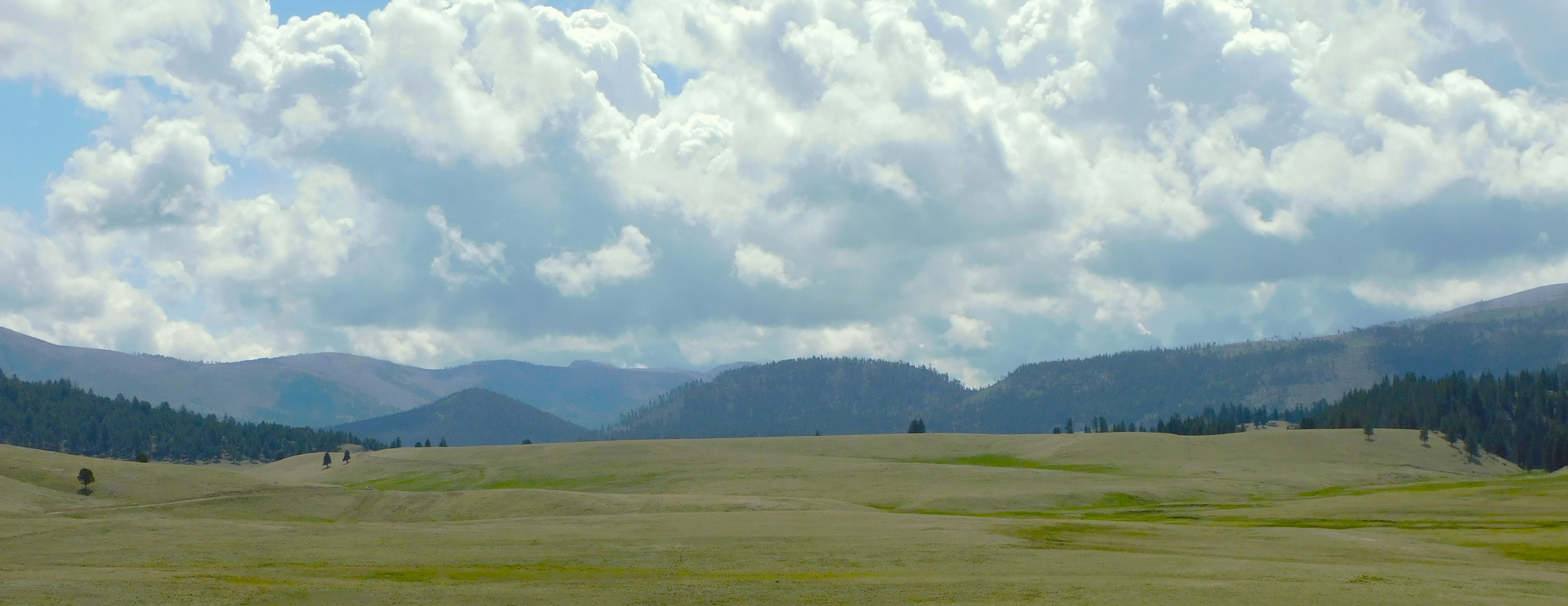
It takes close to an hour to drive back into the far valleys but the scenery is gorgeous all the way. The place was once a working ranch and there are a few remnant vestiges of the ranching days.
There are still a few cattle grazing among the buttercups as in the old days. This was once the 95,000-acre Baca Ranch. I think it must have been cowboy heaven — except maybe in the snowy winters. The snow was over 100 inches in places this past year.
There are elk here in the thousands. I saw an estimate of the elk to human ratio of 5000 to 1 — but that is surely a exaggeration, right? I have seen elk here but not on this trip and they stay concealed except in the rutting season. This must be elk heaven, too.
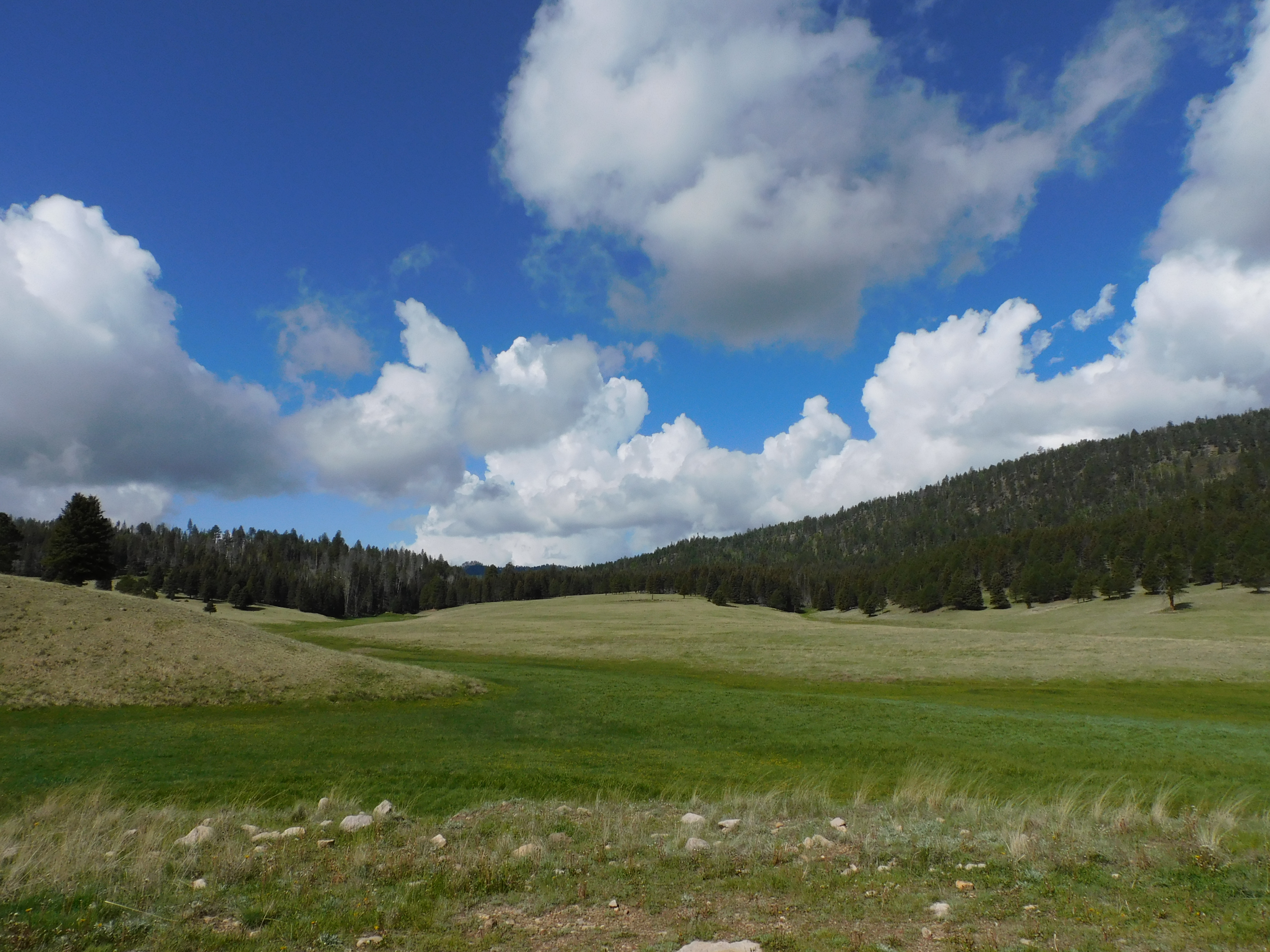
Access to the Valles Caldera is controlled. There is no camping. Everyone must be out of the preserve by 6 PM. That means that one’s time in the backcountry is limited. You have to head out before 5 to reach the front gate by 6. I could tell you how to get access to the backcountry — but I can’t. I’d then be tempted to kill you — so I’ll let you research it. There is a small cost for the access permit and there is another cost for a fishing permit.
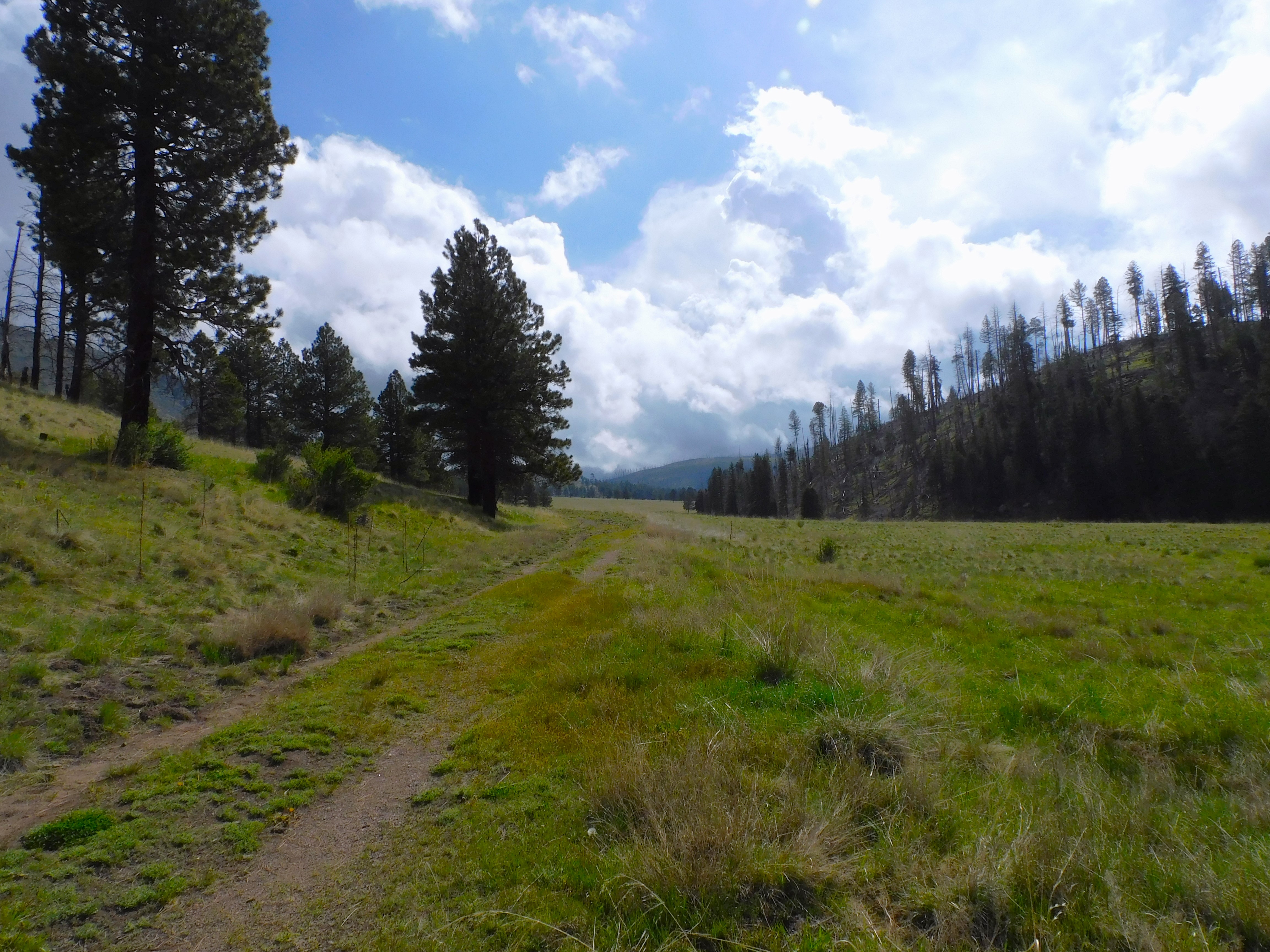
One reason for access to the three valleys is the fishing. It is good fishing for trout on the Rio San Antonio. The river is small but pristine and you mostly have it to yourself. Some fishermen would give their right arm to fish in that kind of water– but then they probably couldn’t fish it at all.
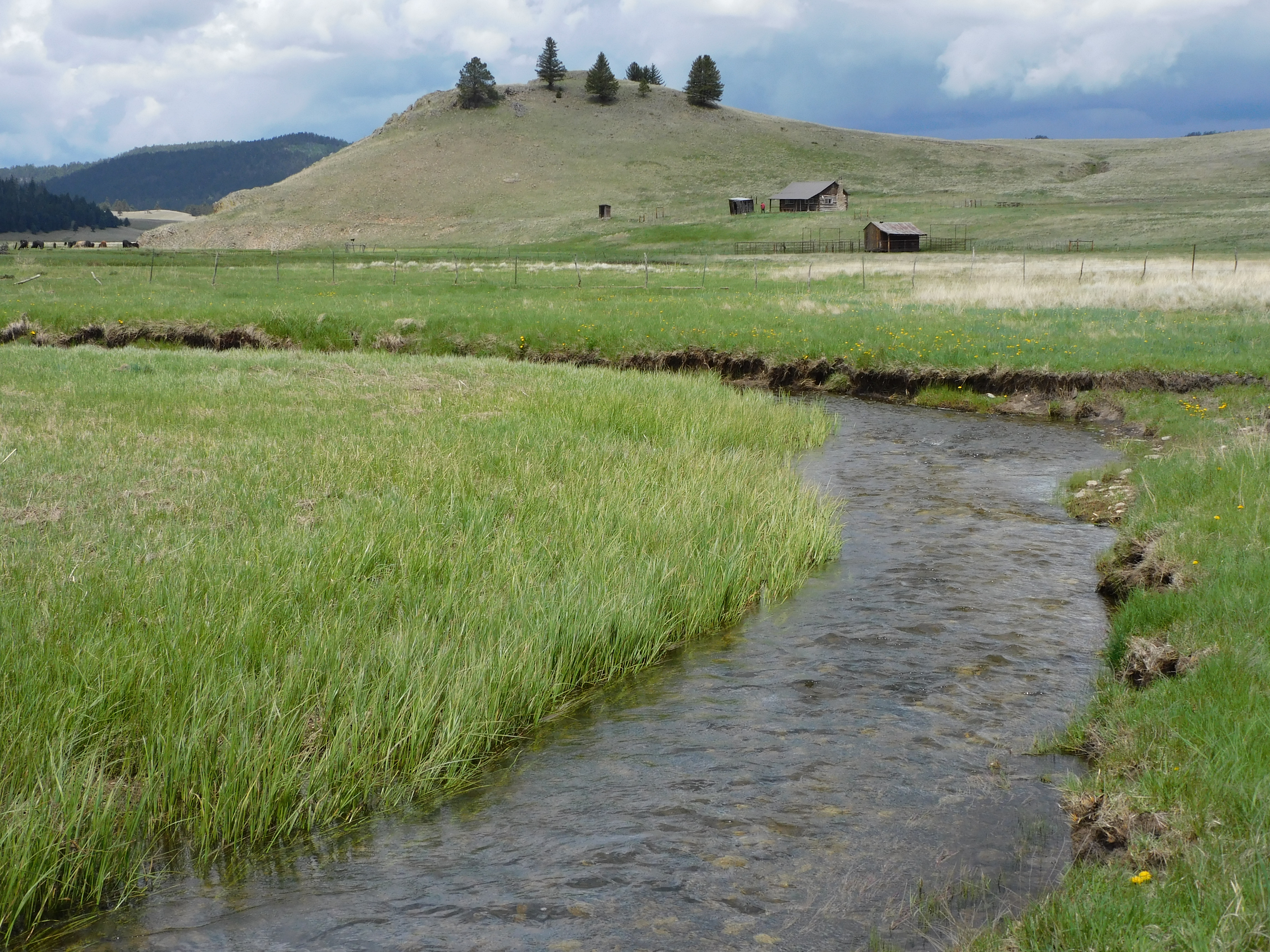
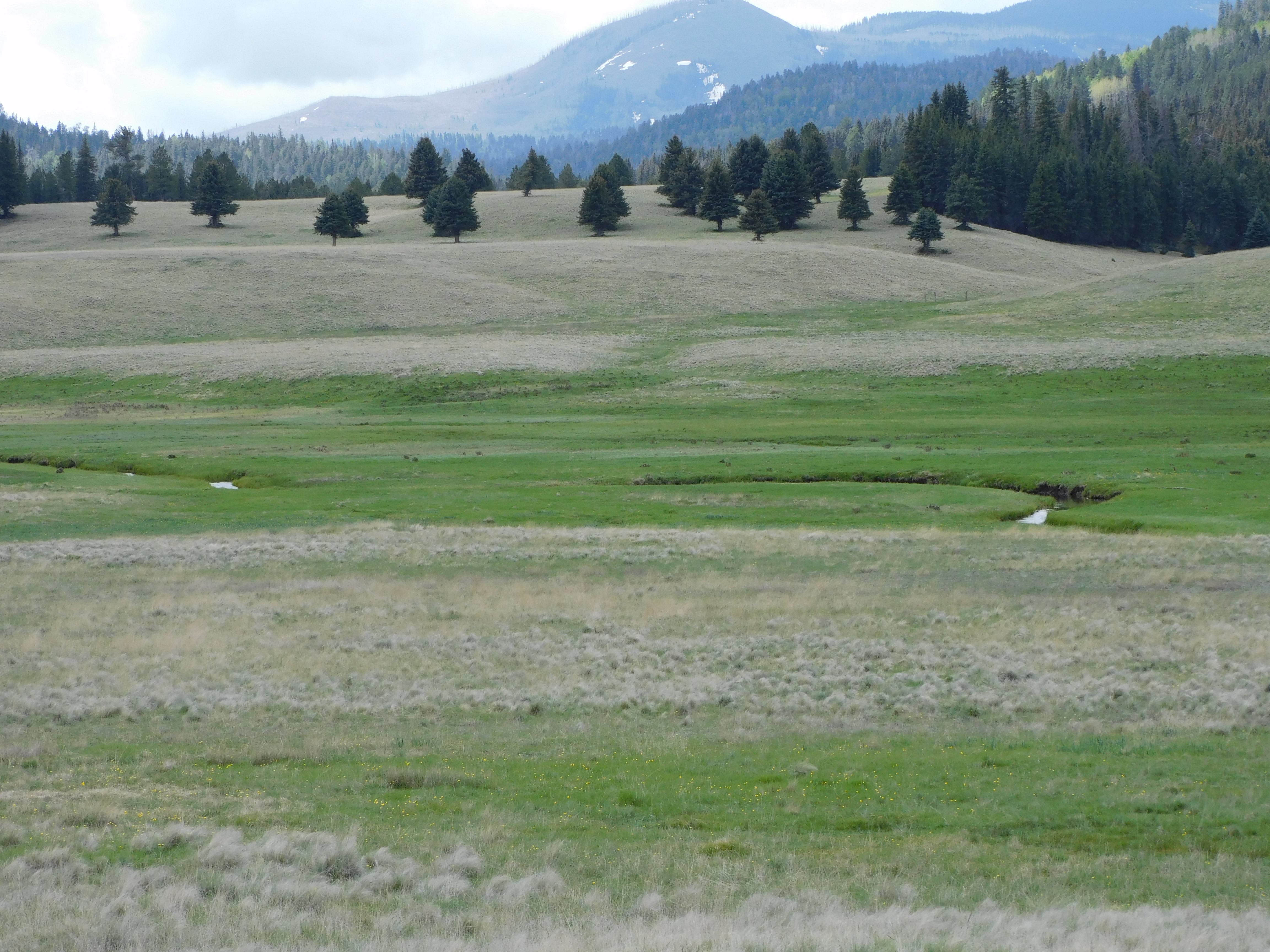
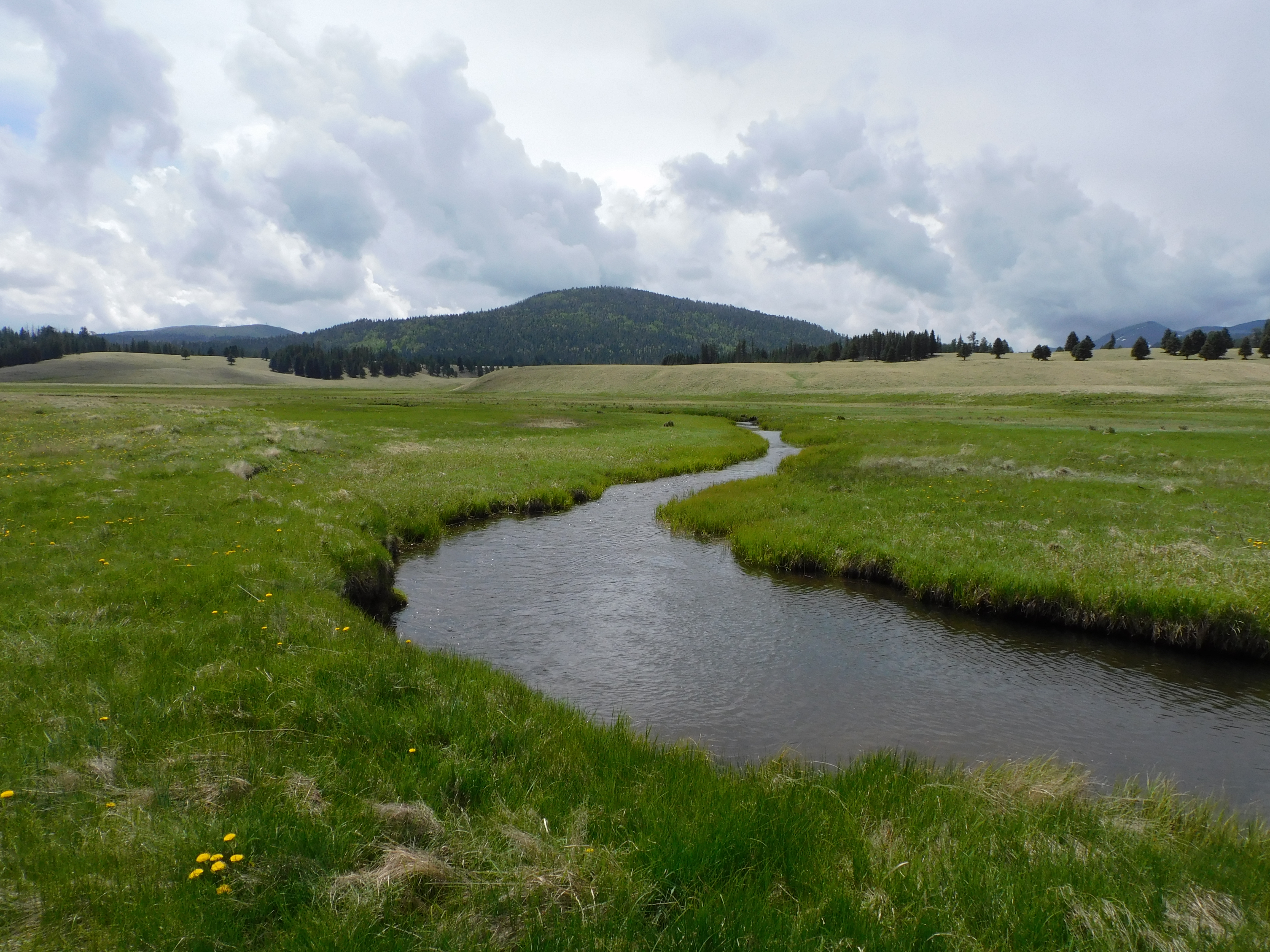
It is achingly beautiful. I will stop here, with a few more pictures, because I simply want to blab on and on about the place. They say a picture is worth a thousand words so I will simply express myself that way.
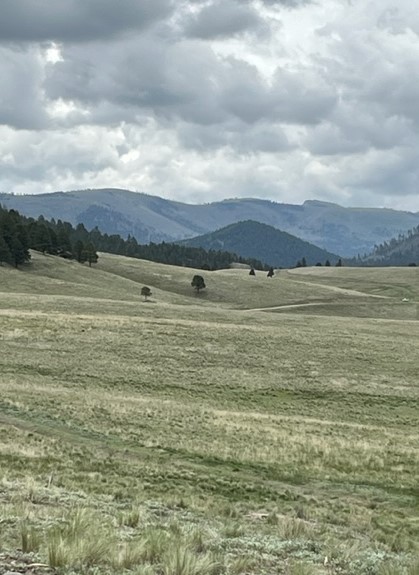
* * *























